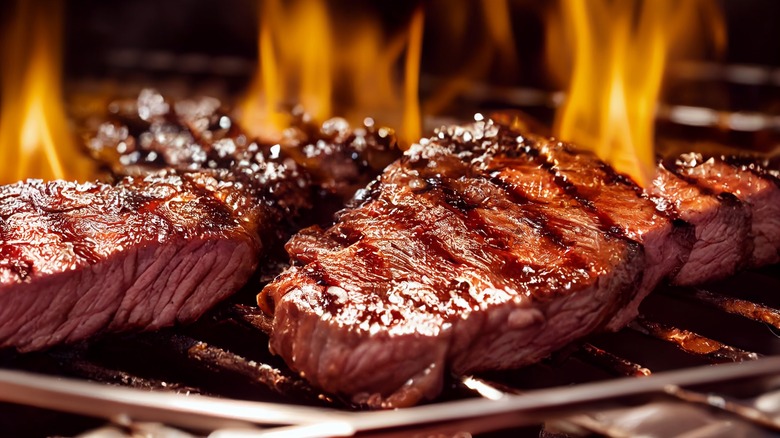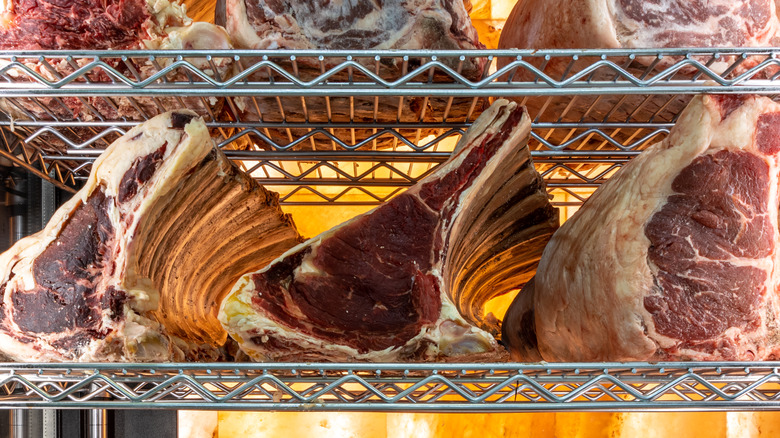Dry Aged Your Own Steak? Here's The Best Way To Cook It, According To A Beef Expert
Many steakhouses dry age fine cuts of steak as a badge of flavorful honor. Dry-aged beef is unique because the process sucks moisture out of the meat and disintegrates its enzymes, resulting in an intense, umami-rich palate and an ultra-tender texture. While restaurants often have special dry-aging chambers, you can also dry age your own steak at home.
We already know that the ideal spot to age your steak is your fridge's bottom shelf where it's coldest. But as for what to do once it's aged, we also consulted a steak expert — ambassador for Certified Angus Beef K.C. Gulbro — on the best way to cook dry-aged steak at home. Not only is Gulbro a Certified Angus Beef ambassador, but he's also chef and owner of FoxFire Restaurant and Copper Fox Event Venue, specializing in steak and seafood.
Gulbro says the best way to cook dry-aged steak is "basting the meat in a sauté pan with butter, rosemary, salt, and pepper" because these "will add a layer of flavor that enhances the process." A seasoned butter sauté will make the steak nice and juicy without detracting from its dry-aged flavors, and it'll add another layer of fatty richness.
That said, Gulbro acknowledged that "nothing is better than a grill" for a summertime steak dinner. If you grill your steak, Gulbro cautioned that "dry-aged steaks have less moisture and will cook faster than wet-aged steaks." Fortunately, there are measures you can take to ensure your meat cooks perfectly.
More tips from chef K.C. Gulbro
Whether you're sautéing or grilling a steak you've dry aged at home, K.C. Gulbro has a few more prepping and cooking tips to help you out. The first step is to "trim the meat before cooking it." While that extra layer of fat serves an important function during the dry-aging process, leaving it on will create a tough, undesirable chew and a barrier for flavor infusion. Gulbro also told Tasting Table to "make sure you season your meat and let it rest before cooking." This is another well-known tactic for enhancing meat's tenderness and obtaining the juiciest possible results.
Moving on to the cooking process, Gulbro stressed the importance of a meat thermometer for determining doneness: "Dry-aged steaks have less moisture and will cook faster than wet-aged steaks," he told us, adding, "The touch technique is not as accurate, as the meat is already firmer." A rare steak should have an internal temperature of 120 degrees Fahrenheit, while a medium steak should measure 140 degrees Fahrenheit.
If you're wondering whether or not you can enjoy your home-aged steak raw, Gulbro doesn't recommend it. Letting your meat sit for a few weeks to a month in your fridge comes with the risk of harmful bacteria, so "cooking your dry-aged steaks at home will prevent most foodborne illnesses." If you want carpaccio, Gulbro suggested it be "lightly seared after cleaning and then sliced."

